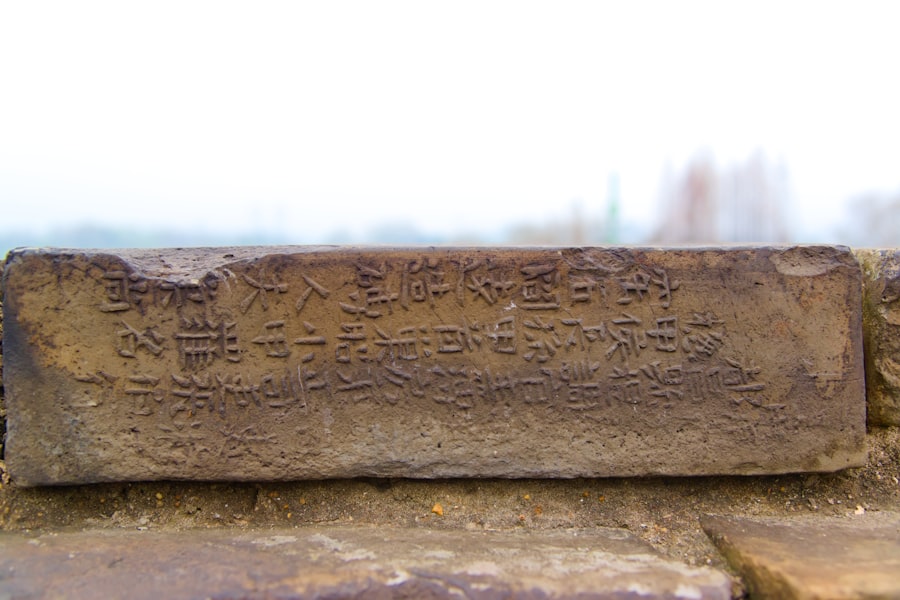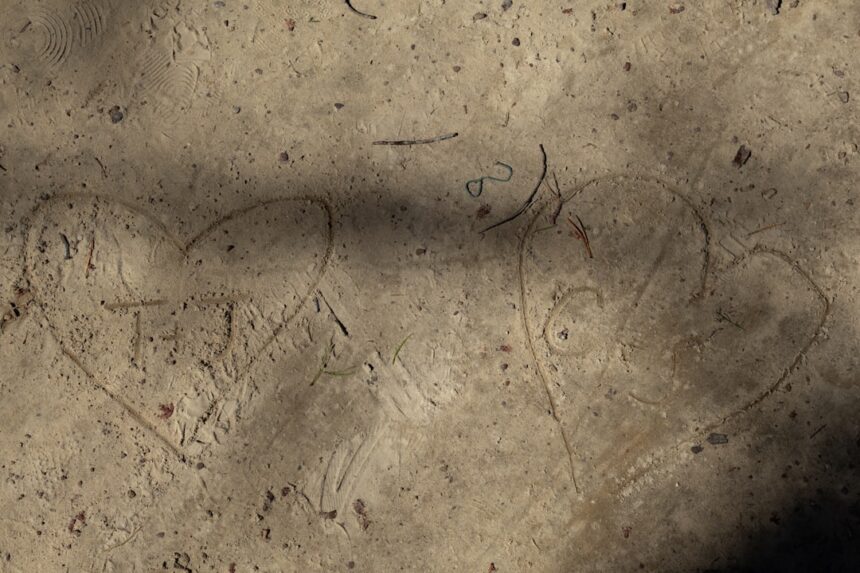When I think about the concept of a forged signature, I realize that it is a complex issue that intertwines art, deception, and legality. A forged signature occurs when someone replicates another person’s signature without their consent, intending to deceive others into believing that the document is authentic. This act can range from a simple scribble that mimics the original to a highly skilled reproduction that is nearly indistinguishable from the real thing.
The motivations behind forging a signature can vary widely, from financial gain to personal vendettas, and understanding these motivations is crucial in grasping the full scope of the issue. In my exploration of forged signatures, I have come to appreciate the nuances involved in distinguishing between forgery and legitimate signature variations. People often have unique ways of signing their names, influenced by mood, context, or even the writing instrument used.
This variability can complicate the identification of a forged signature, as what may appear to be a forgery at first glance could actually be a legitimate variation. Therefore, it is essential to approach each case with a discerning eye and an understanding of the individual’s typical signing habits.
Key Takeaways
- Understanding the concept of a forged signature
- The legal implications of forging a signature
- How to detect a forged signature
- Consequences of forging a signature
- Different types of forged signatures
The legal implications of forging a signature
The legal implications of forging a signature are profound and far-reaching. When I delve into this topic, I find that forgery is considered a criminal offense in most jurisdictions, carrying severe penalties that can include fines and imprisonment. The law views forgery as a form of fraud, as it involves deceitful practices intended to secure an unlawful gain.
Depending on the circumstances surrounding the forgery, individuals may face civil lawsuits in addition to criminal charges, which can lead to significant financial repercussions. Moreover, the legal ramifications extend beyond the individual who commits the forgery. In many cases, businesses and organizations can also be held liable if they fail to implement adequate measures to prevent forgery.
This reality underscores the importance of maintaining robust internal controls and ensuring that employees are trained to recognize and report suspicious activities. As I reflect on these legal implications, it becomes clear that both individuals and organizations must take forgery seriously to protect themselves from potential legal entanglements.
How to detect a forged signature

Detecting a forged signature requires a keen eye and an understanding of various techniques used in handwriting analysis. When I consider this process, I realize that it often involves comparing the questioned signature against known samples of the individual’s handwriting. This comparison can reveal discrepancies in letter formation, slant, pressure, and overall consistency.
Forensic document examiners employ specialized tools and techniques to analyze these factors, making it possible to identify forgeries with a high degree of accuracy. In my experience, there are also some telltale signs that can indicate a forged signature. For instance, if the signature appears shaky or lacks fluidity, it may suggest that the signer was not comfortable or familiar with the act of signing.
Additionally, inconsistencies in size or spacing can be red flags that warrant further investigation. As I explore these detection methods, I am reminded of the importance of vigilance in both personal and professional contexts, as recognizing a forged signature early can prevent further complications down the line.
Consequences of forging a signature
| Consequences | Description |
|---|---|
| Civil Penalties | Financial fines and penalties imposed by the court. |
| Criminal Charges | Possible prosecution and criminal charges for fraud. |
| Legal Action | Lawsuits and legal action from affected parties. |
| Invalid Documents | Documents with forged signatures may be deemed invalid. |
The consequences of forging a signature can be devastating for both the forger and the victim. When I think about the forger’s perspective, I recognize that they may face criminal charges that could lead to imprisonment or hefty fines. Beyond legal repercussions, there is also the potential for long-term damage to one’s reputation and future opportunities.
A conviction for forgery can follow an individual for years, impacting their ability to secure employment or engage in business ventures. On the other hand, victims of forged signatures often experience significant emotional and financial distress. The betrayal of trust can lead to feelings of anger and violation, while the financial implications can be severe if the forgery results in unauthorized transactions or loss of assets.
In my reflections on this topic, I understand that both parties involved in a forgery case endure consequences that extend far beyond the immediate act itself, affecting their lives in profound ways.
Different types of forged signatures
As I delve deeper into the world of forged signatures, I discover that there are several distinct types that one might encounter. One common type is the simple forgery, where an individual attempts to replicate another person’s signature without any sophisticated techniques or tools. This type often results in signatures that are easily recognizable as fakes due to their lack of finesse.
Another type is known as “traced forgery,” where the forger uses a light source or tracing paper to create a copy of an original signature. This method can produce more convincing results but still may reveal inconsistencies upon closer inspection. Additionally, there are instances of “simulated forgery,” where an individual practices replicating a signature over time to achieve a more authentic appearance.
Each type presents its own challenges for detection and highlights the varying levels of skill involved in forging signatures.
Common scenarios where forged signatures are used

In my exploration of common scenarios involving forged signatures, I find that they often arise in situations where financial gain is at stake. For instance, individuals may forge signatures on checks or loan documents to access funds unlawfully. This type of forgery can have serious implications for both individuals and financial institutions, leading to significant losses and legal battles.
Another scenario involves real estate transactions, where forgers may sign documents related to property sales or transfers without the owner’s consent. This type of forgery can result in complicated legal disputes over property ownership and title claims. As I reflect on these scenarios, it becomes evident that forged signatures can infiltrate various aspects of life, from personal finances to major business dealings.
The impact of forged signatures on individuals and businesses
The impact of forged signatures extends beyond immediate financial losses; it can also erode trust within personal relationships and professional environments. When I consider how individuals are affected by forgery, I recognize that victims often experience feelings of betrayal and vulnerability. The emotional toll can be significant, leading to anxiety and distrust in future interactions.
For businesses, the ramifications can be even more pronounced. A single incident of forgery can damage a company’s reputation and lead to costly legal battles. Moreover, if customers or clients lose faith in a business’s integrity due to incidents involving forged signatures, it can result in lost revenue and diminished customer loyalty.
As I ponder these impacts, I understand that both individuals and businesses must remain vigilant against forgery to protect their interests and maintain trust.
Preventing the occurrence of forged signatures
Preventing forged signatures requires proactive measures and a commitment to security at both personal and organizational levels. In my experience, one effective strategy is implementing robust verification processes for important documents requiring signatures. This might include requiring multiple forms of identification or utilizing digital signature technology that incorporates encryption and authentication features.
Additionally, educating individuals about the signs of forgery can empower them to recognize potential threats before they escalate. Training employees on best practices for handling sensitive documents can create a culture of vigilance within organizations. As I reflect on these preventive measures, I realize that fostering awareness and implementing security protocols are essential steps toward minimizing the risk of forgery.
Reporting and addressing a forged signature
When faced with a suspected forged signature, knowing how to report and address the issue is crucial. In my understanding, the first step is often to gather evidence by documenting any discrepancies or irregularities associated with the signature in question. This documentation can be invaluable when presenting the case to authorities or legal representatives.
Once sufficient evidence has been collected, it is essential to report the incident to relevant parties—this could include law enforcement agencies or financial institutions affected by the forgery. In some cases, seeking legal counsel may also be advisable to navigate potential civil actions against the forger. As I contemplate this process, I recognize that timely reporting is vital in mitigating further damage and pursuing justice.
The psychology behind forging a signature
Exploring the psychology behind forging a signature reveals fascinating insights into human behavior and motivation. In my reflections on this topic, I find that individuals who forge signatures often do so out of desperation or perceived necessity. Financial hardship may drive someone to commit forgery as a means of survival or escape from overwhelming debt.
Additionally, some individuals may forge signatures due to a desire for power or control over others’ lives or resources.
As I consider these motivations, it becomes clear that understanding the psychological underpinnings of forgery can inform prevention strategies and interventions.
Case studies of notable forged signature incidents
As I delve into case studies of notable forged signature incidents, I am struck by how these events have shaped public perception around forgery and its consequences. One infamous case involved a high-profile art dealer who forged signatures on valuable paintings to inflate their provenance and value. The scandal not only led to criminal charges but also raised questions about authenticity in the art world.
Another compelling case involved a corporate executive who forged signatures on loan documents to secure millions in funding for fraudulent ventures. The fallout from this incident resulted in significant financial losses for investors and tarnished reputations across multiple organizations involved. These case studies serve as powerful reminders of how forgery can have far-reaching implications beyond individual acts of deception.
In conclusion, my exploration of forged signatures has illuminated various facets of this complex issue—from understanding what constitutes forgery to recognizing its legal implications and psychological motivations. As I reflect on this topic, it becomes evident that awareness and vigilance are essential in combating forgery’s prevalence in our lives today. By implementing preventive measures and fostering open communication about potential threats, we can work together to protect ourselves from the damaging effects of forged signatures.
This piece delves into the various methods employed by fraudsters and the challenges faced by authorities in curbing such activities. For a deeper understanding of the complexities involved, you can read the full article on this topic by visiting this link. The article provides valuable insights into the preventive measures being implemented and the technological advancements aiding in the detection of forged documents.
WATCH HOW My Late Aunt Gifted A Haunted House That Exposed My Cheating Wife
FAQs
What is a forged signature?
A forged signature is a signature that has been fraudulently replicated or imitated without the consent of the original signer. It is a form of forgery and is illegal.
What are the consequences of forging a signature?
Forging a signature is a criminal offense and can result in legal consequences such as fines, imprisonment, and civil liabilities. It can also damage the reputation and trust of the individual or organization whose signature has been forged.
How can you prevent your signature from being forged?
To prevent your signature from being forged, it is important to keep your personal information and documents secure, use secure and unique signatures, and be cautious when sharing personal information or signing documents.
What should you do if you suspect a forged signature?
If you suspect that your signature has been forged, you should report it to the relevant authorities, such as the police or legal professionals, and seek legal advice on how to address the situation.
What are some common examples of forged signatures?
Common examples of forged signatures include forged checks, contracts, legal documents, and authorization forms.Forgery can also occur in the form of identity theft, where someone uses another person’s signature without their consent.




